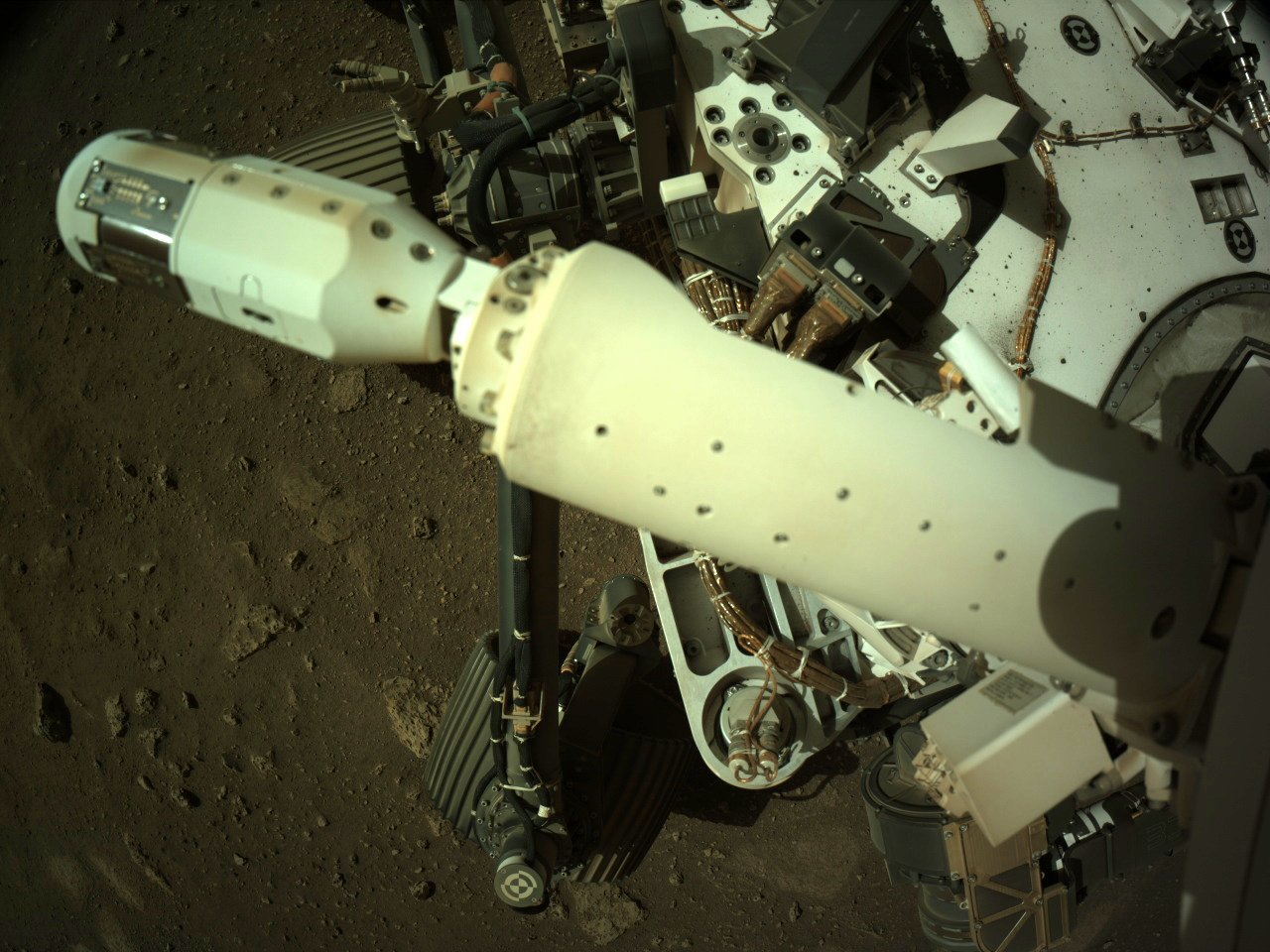NASA's Perseverance rover continues to get up to speed on the Red Planet.
Since Perseverance's picture-perfect landing on Feb. 18, the rover team has been methodically checking out its seven science instruments and various subsystems. For example, Perseverance just deployed its wind sensor, as before-and-after photos captured by the six-wheeled robot's navigation cameras show.
The wind sensor is part of Perseverance's weather station, which is called the Mars Environmental Dynamics Analyzer (MEDA). The instrument will monitor air temperature, humidity, radiation, dust and wind at Perseverance's landing site, the floor of Jezero Crater, a 28-mile-wide (45 kilometers) hole in the ground that harbored a deep lake and a river delta in the ancient past.
Live updates: NASA's Perseverance Mars rover mission
Congrats to the MEDA team! Look what just deployed!! The wind sensor! @estrellasycafe You must be so stoked! Find more photos at: https://t.co/MTE3cqSBDd #mars2020 pic.twitter.com/FiGbSTvqYnMarch 1, 2021
Join our forums here to discuss the Perseverance rover on Mars. What do you hope finds?
Perseverance, the heart of NASA's $2.7 billion Mars 2020 mission, will hunt for signs of life inside Jezero and collect and cache samples for future return to Earth. But that main science work won't start immediately after the rover gets up and running; Perseverance's first big job will be to find an airfield where its little helicopter buddy can take off.
That helicopter, a 4-lb. (1.8 kilograms) craft named Ingenuity, journeyed to Mars on Perseverance's belly. Ingenuity will deploy at the airfield and try to make the first-ever rotorcraft flights on a world beyond Earth, demonstrating technology that could pave the way for a whole new Mars exploration strategy.

Ingenuity's flights will likely take place this spring, with science and sampling work commencing in earnest in the summer, mission team members have said.
Get the Space.com Newsletter
Breaking space news, the latest updates on rocket launches, skywatching events and more!
But Perseverance's early days on Mars are far from boring. The rover team has already posted more than 6,300 of the rover's Jezero photos, many of them spectacular high-resolution shots taken with Perseverance's Mastcam-Z camera system. You can find them here. Happy sightseeing!
Mike Wall is the author of "Out There" (Grand Central Publishing, 2018; illustrated by Karl Tate), a book about the search for alien life. Follow him on Twitter @michaeldwall. Follow us on Twitter @Spacedotcom or Facebook.
Join our Space Forums to keep talking space on the latest missions, night sky and more! And if you have a news tip, correction or comment, let us know at: community@space.com.

Michael Wall is a Senior Space Writer with Space.com and joined the team in 2010. He primarily covers exoplanets, spaceflight and military space, but has been known to dabble in the space art beat. His book about the search for alien life, "Out There," was published on Nov. 13, 2018. Before becoming a science writer, Michael worked as a herpetologist and wildlife biologist. He has a Ph.D. in evolutionary biology from the University of Sydney, Australia, a bachelor's degree from the University of Arizona, and a graduate certificate in science writing from the University of California, Santa Cruz. To find out what his latest project is, you can follow Michael on Twitter.









